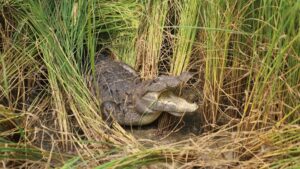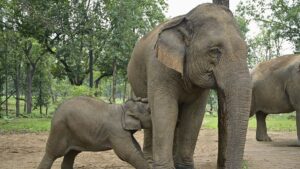The Himalayan Brown Bear, a rare and iconic species, is increasingly being observed scavenging at open garbage dumps near Srinagar in Kashmir, India. This troubling behavior is a sign of environmental imbalance, with bears becoming food-conditioned to human garbage instead of foraging naturally. Food-conditioned bears face significant health risks and are often at the center of escalating human-bear conflicts.
In this Q&A with Thomas Sharp, a Wildlife SOS ecologist, we explore the growing problem of Himalayan Brown Bears foraging in garbage dumps—why it’s dangerous for both bears and people, and what can be done to address it.
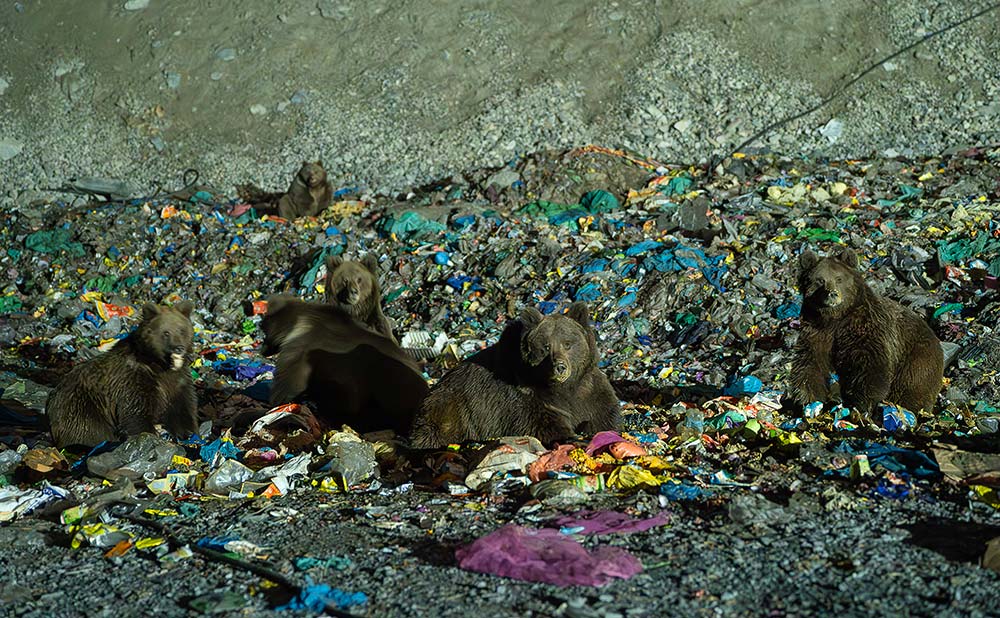
Q&A: Himalayan Brown Bears and Garbage Dump Foraging
Q: How long have Himalayan Brown Bears been accessing garbage dumps for food in the Kashmir area?
A: While the exact timeline is unclear, this behavior has likely been occurring for quite some time. However, the problem has become significantly worse over the past 10 years—especially in the last five.
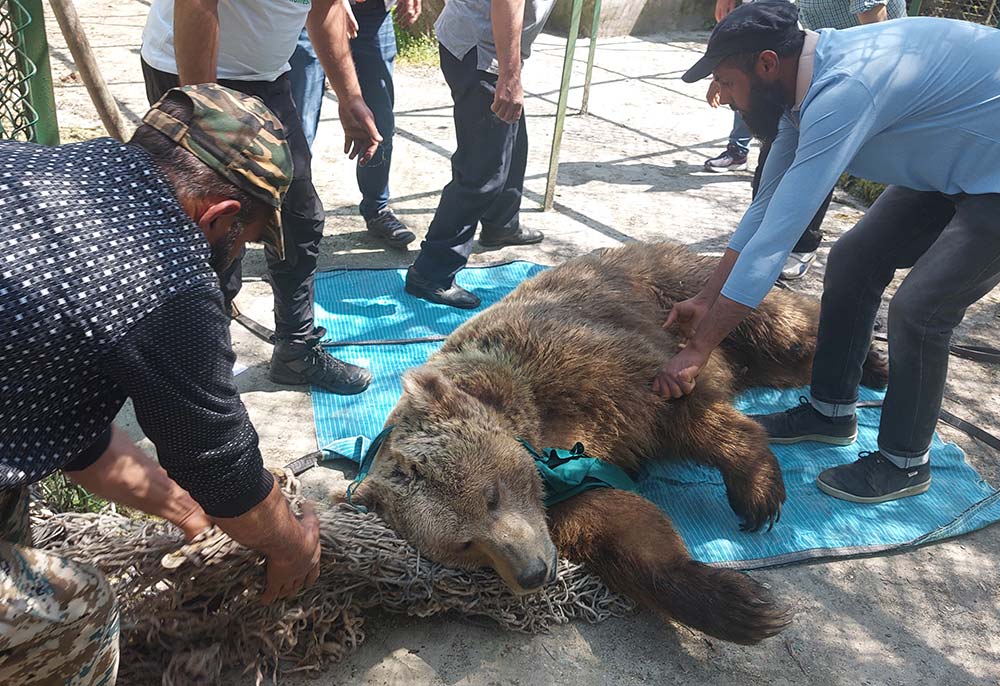
Q: Is there a specific type of food they are seeking in the dumps?
A: No. These bears are omnivores and will eat almost anything that humans consume. They seem especially drawn to fatty foods, which help them build fat reserves for winter hibernation.
Q: Why is it a problem when bears feed at garbage dumps?
A: Food-conditioned bears—those that become accustomed to human food—often stop foraging naturally. This can lead to serious health issues, including the ingestion of harmful materials like plastics and glass. Many bears suffer from internal injuries or end up with glass shards embedded in their gums.
Additionally these bears are more likely to enter human settlements in search of food and may become aggressive. Once a bear associates people with food, the risk of human-bear conflict increases sharply. Even worse, mother bears often pass this behavior on to their cubs, teaching them to scavenge instead of forage in the wild. This creates a dangerous cycle that compromises the health, survival, and future of the species.
Q: Has this kind of behavior been observed in other parts of the world?
A: Yes, this is a global issue in areas where brown bears live near human populations. Similar problems have been reported in the U.S., Canada, Europe, and parts of Asia. In the 1960s, for example, Yellowstone National Park had a bear feeding program to attract grizzly bears for tourist viewing. Eventually, it was stopped when authorities realized it was harmful to bears and dangerous for visitors.
Q: How have other regions addressed this issue?
A: It’s a complex, long-term challenge. The most effective strategies involve eliminating bear access to human food and using aversive conditioning—or hazing—to discourage them from entering human areas. While some bears eventually revert to natural behaviors, others remain food-conditioned and continue seeking out human garbage, perpetuating the problem.
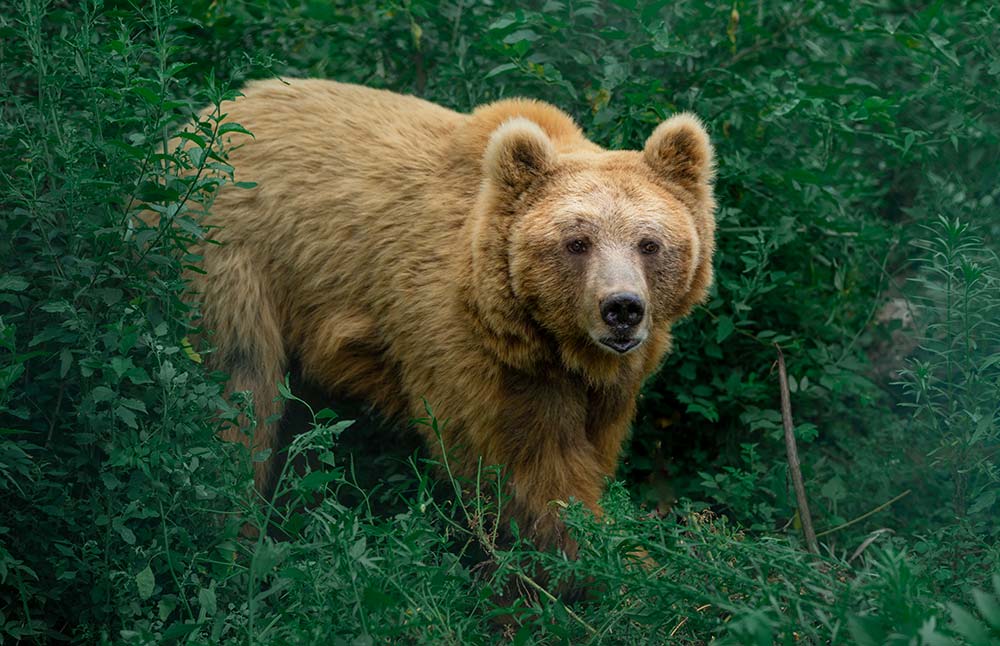
Q: It’s been observed that mother bears are bringing their cubs to the dumps. Why is this especially concerning?
A: When mother bears bring cubs to garbage dumps, they’re teaching them that scavenging human garbage is a normal way to find food. These cubs grow up without the survival skills needed to forage in the wild. As a result, their life expectancy is lower, and the cycle of food conditioning continues from one generation to the next.
Q: What can be done about the problem?
A: Garbage dumps and waste bins must be made bear-proof to cut off easy access to human food. This can involve using secure, bear-resistant bins, electric fencing, and other physical barriers. However, even with these measures, bears may still need to be hazed to deter them from approaching human areas. The goal is to re-establish natural foraging behavior and reduce bear-human interaction.
Q: Why is addressing this problem important for the conservation of the Himalayan Brown Bear?
A: Food-conditioned bears typically have shorter, unhealthier lives and are more likely to be involved in dangerous encounters with humans. The Himalayan Brown Bear population in Kashmir is already endangered. If this issue isn’t addressed, it threatens not just individual bears, but the long-term survival of the species in the region.
Because of your support, we can continue to ensure that the Himalayan Brown Bear thrives in the wild for generations to come.


